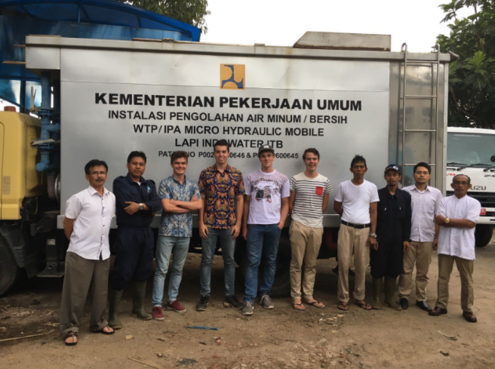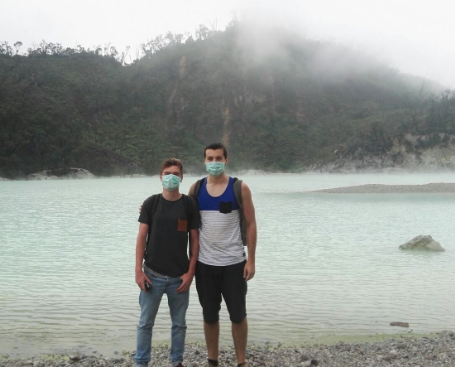PDAM Tirtawening Kota Bandung: Mobile Treatment Plant
Being denied both our first options for minors in Delft, we went looking elsewhere. With a stroke of luck we came across the opportunity to go to Bandung in Indonesia for our minor provided by Bas Heijman, which we took with great enthusiasm. In the end, the experience of having to adapt to a completely different attitude to everything, has enriched us with many great experiences. We would like to thank the Marc van Eekeren fund greatly, for partially funding our project and making this experience possible for us financially.
We were not the first to travel to Bandung, Indonesia. Multiple groups had preceded us at PDAM Tirtawening Kota Bandung trying to improve the water quality there. Our research however was not centered on the full scale treatment plant, but on the mobile treatment plant on site. This mobile treatment plant can be used as an emergency backup and mobilised for disaster areas, creating clean drinking water where it would not be possible otherwise. This particular mobile treatment plant is an exact copy of the full scale plant in Bandung, consisting of the same treatment processes. For this reason research performed on the mobile treatment plant can be used as feedback for the full scale treatment plant. The goal of our research was to get the mobile treatment plant to produce water with a turbidity below one NTU, with the lowest coagulant dosage possible.
Upon arrival a tour was done on the full scale treatment plant and a few things were noticed. Many areas of treatment were not clean and it was clear that maintenance is not seen as a priority. However when comparing to research from Nicael jooste & Bas Holman (students Civil Engineering) who went to PDAM a year earlier, it is visible maintenance has improved since then.
Once acquainted with the treatment plant, research on the mobile treatment plant could commence. The first few weeks were troublesome with many setbacks related to the mobile treatment plant breaking down. Furthermore, the water quality was far off the desired turbidity of one NTU. A jar test program was designed to determine at what efficiency the mobile treatment plant should be performing when working properly. Parts needed replacing and calibrations were done to make the dosing pumps more accurate. After many weeks of optimizations and adjustsments, the mobile treatment plant was able to frequently achieve a turbidity below one NTU with an optimal dosage of 30 – 40 mg/L PAC.
Now that it was known that the mobile treatment plant can deliver water with a desired turbidity below one NTU, this data could be used for feedback towards the full scale plant. The full scale plant should be able to similarly deliver a turbidity below one NTU, since it is a copy of the mobile treatment plant.
When the research was finished and the desired results were gathered, we presented these to the director and staff present at PDAM Tirtawening Kota Bandung. The director and staff were very happy with the results and hopefully our results can be used to further improve PDAM Tirtawening Kota Bandung after our departure. Furthermore, a manual was written for the people who may use the mobile treatment plant explaining what dosage and maintenance needs to be done. The whole experience was amazing and we sincerely recommend anyone to do their project abroad in a country such as Indonesia.

